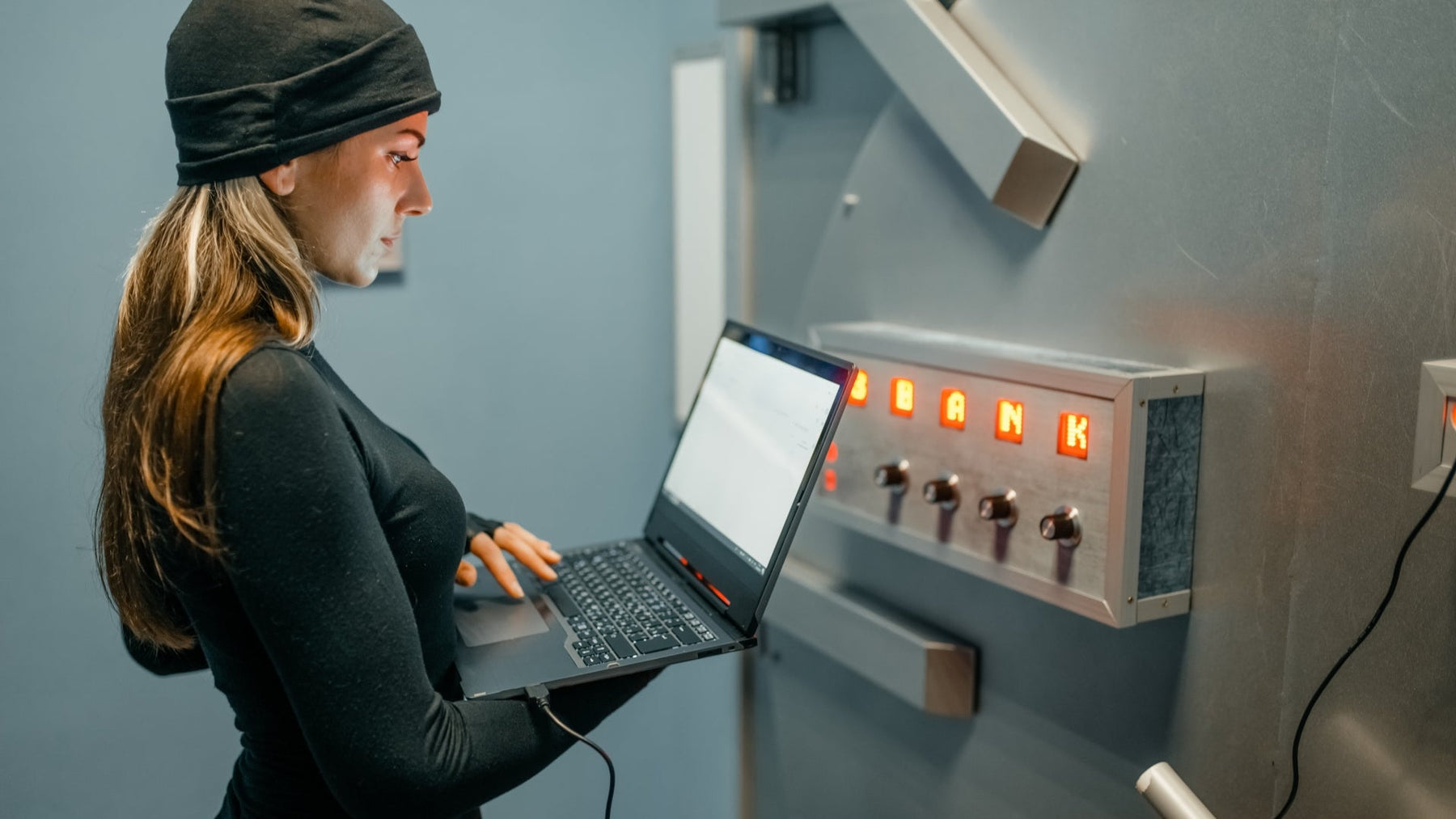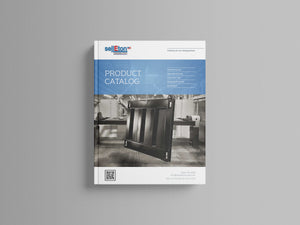
EMR Scale Integration: Complete Guide to Seamless Weight Data Management
Manual data entry errors in healthcare cost facilities thousands annually while threatening patient safety through inaccurate weight measurements. Medical professionals face constant pressure to deliver precise care, yet traditional weighing processes introduce unnecessary risks through transcription mistakes and workflow inefficiencies. Modern emr scale integration technology eliminates these challenges by automatically transferring weight data directly into electronic medical records, ensuring accuracy while saving valuable time.
Healthcare organizations implementing digital transformation strategies recognize that seamless data integration forms the foundation of improved patient outcomes. This comprehensive guide explores how EMR scale integration works, the benefits it delivers, and practical implementation strategies that medical facilities can deploy to enhance their operations.
What is EMR Scale Integration
EMR scale integration represents an advanced healthcare technology solution that automatically transfers weight, height, and body mass index data from digital scales directly into electronic medical records without manual intervention. This system eliminates the traditional process where medical professionals manually enter measurements, reducing transcription errors that can lead to dangerous medication dosing mistakes.
The technology operates through wireless and wired connectivity options that establish secure communication between weighing devices and EMR platforms. Weight scales equipped with wireless capabilities transmit data instantly to connected systems, ensuring that accurate weight measurements appear in patient records immediately after weighing procedures.
Real-time data transmission relies on established healthcare communication protocols, particularly HL7 standards that ensure interoperability between different systems. WiFi and Ethernet connections provide the backbone for these communications, allowing scales to connect directly to hospital networks and push data to designated EMR platforms automatically.
Major integration platforms have emerged to support widespread implementation across healthcare facilities. Welch Allyn Connex vital signs monitors, CEIBA IoMT eConnect Box solutions, and Allscripts TouchWorks compatibility represent leading examples of comprehensive integration platforms that medical facilities can deploy to achieve seamless weight data management.
Benefits of EMR Scale Integration
The elimination of transcription errors stands as the primary advantage of automated scale integration, directly addressing a critical patient safety concern. Manual data entry from handwritten notes introduces multiple opportunities for mistakes, including decimal point errors and number switching that can result in incorrect medication dosing, particularly dangerous for pediatric and bariatric patients requiring precise weight-based calculations.
Enhanced patient safety emerges through accurate weight documentation that supports critical clinical decisions. When healthcare teams access reliable, real-time weight information, they can make informed decisions about medication dosages, treatment protocols, and monitoring requirements without questioning data accuracy or waiting for manual updates.
Time savings for healthcare staff represent significant operational benefits, as automated data transmission reduces workflow interruptions and eliminates repetitive data entry tasks. Medical professionals can focus on direct patient care rather than administrative documentation, improving both efficiency and job satisfaction while reducing operational costs.
Improved data accuracy through direct digital transmission prevents common transcription errors that plague manual systems. Digital scales capture precise measurements and transmit them without human interpretation, ensuring that weight changes, growth patterns, and treatment responses are documented accurately for comprehensive patient monitoring.
Real-time access to patient weight information enables coordinated care among healthcare team members, supporting collaborative treatment approaches. When weight data automatically updates across connected systems, physicians, nurses, and specialists can access current information immediately, facilitating better communication and treatment coordination.
Types of Scales Supporting EMR Integration
Digital physician scales with wireless connectivity capabilities represent the foundation of modern weight measurement systems in healthcare settings. These scales typically support wireless kits such as BTKIT-01 and BTKIT-03 that retrofit existing equipment with modern connectivity features, allowing medical facilities to upgrade their current scales without complete replacement.
BMI scales automatically calculate and transmit body mass index data directly to EMR systems, providing comprehensive body composition information beyond simple weight measurements. These sophisticated devices perform calculations automatically and ensure that both weight and BMI data populate patient records simultaneously, supporting comprehensive health assessments.
Wheelchair accessible scales with ramps accommodate mobility-impaired patients who cannot transfer to standard weighing platforms. These specialized devices integrate seamlessly with EMR systems while providing accurate measurements for patients with disabilities, ensuring inclusive care delivery without compromising data accuracy or patient dignity.
Bariatric scales designed for higher weight capacity serve obese patients requiring specialized care and monitoring. These robust devices support patients weighing up to 1000 pounds or more while maintaining precision and connectivity features necessary for comprehensive bariatric treatment programs.
Pediatric and neonatal scales address the unique requirements of infant weighing procedures with features like diaper weight subtraction and enhanced precision for small weight changes. These specialized devices integrate with EMR systems to support growth monitoring, medication dosing, and developmental assessments critical for pediatric care.
In-bed scales utilize hydraulic lift systems to weigh bedridden patients without requiring transfers that might compromise patient comfort or safety. These innovative solutions integrate with EMR platforms to provide accurate weight data for patients who cannot be moved to traditional weighing stations.
Popular EMR Integration Solutions
Welch Allyn Connex Vital Signs Monitor 6000 Series Integration
The Welch Allyn Connex Vital Signs Monitor 6000 Series provides comprehensive integration capabilities with Health o meter Professional scales, creating a unified platform for capturing and transmitting vital signs data. This system supports automatic data transfer to multiple EMR platforms while maintaining strict security protocols required for healthcare applications.
CEIBA IoMT eConnect Box
CEIBA’s IoMT eConnect Box supports integration with over 20 EMR systems including Cerner and PointClickCare, offering broad compatibility for healthcare organizations using diverse technology platforms. This device-agnostic solution enables facilities to maintain their existing scale equipment while adding modern connectivity features.
EdanUSA MDPro 2500 Vital Signs Monitors
EdanUSA MDPro 2500 Vital Signs Monitors feature wireless scale connectivity that automatically captures weight data alongside other vital signs measurements. This integrated approach streamlines data collection procedures while ensuring comprehensive patient monitoring information reaches EMR systems efficiently.
Allscripts Connectivity Solutions
The Allscripts Connectivity App designed for TouchWorks and Professional EMR systems provides direct integration capabilities for supported weighing devices. This platform offers bidirectional communication features that enhance data accuracy and provide real-time validation of transmitted information.
Midmark IQmanager Software
Midmark’s IQmanager Software interface supports integration with ChARM Health platform and other EMR systems, providing flexible connectivity options for diverse healthcare environments. This solution offers customizable workflows that adapt to specific facility requirements while maintaining data integrity.
Seca Integration Solutions
Seca provides advanced integration solutions featuring bidirectional communication and user ID validation capabilities. These systems support comprehensive audit trails and data verification processes that ensure transmitted weight data meets regulatory compliance requirements while supporting quality assurance protocols.
Wireless vs Wired Integration Methods
Bluetooth wireless transmission utilizes specialized kits like BTKIT-03 that retrofit existing scales with modern connectivity capabilities. This approach offers flexibility for diverse clinical environments while maintaining reliable data transmission without requiring extensive infrastructure modifications.
WiFi connectivity through IoMT platforms provides broader EMR system compatibility and supports multiple device connections simultaneously. This method offers scalability for larger healthcare facilities while ensuring secure data transmission through established network security protocols.
Ethernet wired connections deliver stable, secure data transmission particularly suitable for hospital environments where network reliability is critical. These connections provide consistent performance and enhanced security for facilities prioritizing data protection and system stability.
USB connectivity enables direct PC-to-scale communication through software applications, offering simple setup procedures for smaller medical facilities or specialized applications requiring dedicated connections between specific devices and systems.
Implementation Requirements and Considerations
EMR system compatibility verification represents the critical first step in successful integration planning, requiring detailed assessment of existing vendor interfaces and supported communication protocols. Healthcare organizations must confirm that their current EMR platform supports the specific integration methods and data formats used by target weighing devices.
IT infrastructure requirements include comprehensive WiFi network setup and security protocols that support medical device connectivity while maintaining HIPAA compliance standards. Network infrastructure must provide reliable coverage throughout weighing areas while implementing appropriate security measures to protect patient data during transmission.
Staff training needs encompass new wireless scale operation procedures and basic troubleshooting techniques that enable healthcare workers to operate integrated systems effectively. Training programs should address both technical operation and workflow changes that result from automated data transmission processes.
Hardware requirements specification includes compatible scale models, wireless communication kits, and supporting devices necessary for complete system implementation. Organizations must evaluate their existing equipment and determine upgrade requirements to achieve desired integration capabilities.
Software installation procedures for EMR connectivity applications and communication protocol configuration require coordination between IT departments and clinical staff. These procedures must address system compatibility, security configuration, and workflow integration to ensure seamless operation.
HIPAA compliance and data security measures for patient information protection demand comprehensive evaluation of data transmission methods, storage protocols, and access controls. Organizations must implement appropriate safeguards throughout the integration process to maintain regulatory compliance and protect sensitive health information.
Remote Patient Monitoring Applications
RPM weight scales designed for chronic heart failure monitoring detect sudden weight changes that indicate fluid retention or treatment complications. These devices enable continuous monitoring of patients in home environments while automatically transmitting data to healthcare providers for timely intervention and treatment adjustments.
Diabetes management programs utilize regular weight tracking and BMI calculations to support comprehensive treatment approaches that address both glycemic control and weight management. Automated data collection enables healthcare teams to monitor treatment effectiveness and adjust interventions based on accurate, consistent measurements.
Obesity treatment programs leverage remote weight monitoring capabilities to provide patient accountability and support behavior modification goals. Regular automated weighing creates objective measurement records that support counseling sessions and treatment plan adjustments while reducing clinic visit requirements.
Post-surgical recovery monitoring benefits from automated weight data collection that enables healthcare teams to track healing progress and identify potential complications early. This approach supports both patient convenience and clinical oversight while maintaining comprehensive documentation requirements.
Integration with other RPM devices including pulse oximeters and blood pressure monitors creates comprehensive remote monitoring platforms that provide holistic health assessments. These integrated systems enable coordinated care management while reducing patient burden and healthcare costs.
Common Challenges and Solutions
Data accuracy issues historically associated with manual weight recording find resolution through direct digital transmission that eliminates human error sources. Automated systems capture precise measurements and transmit them without interpretation or transcription, ensuring that patient records contain reliable information for clinical decision-making.
Workflow disruption concerns are minimized through automatic background data transfer that occurs seamlessly during normal weighing procedures. Healthcare staff can continue standard patient care activities while weight data populates EMR systems automatically, maintaining efficient operations without additional administrative burden.
Multiple EMR system compatibility challenges are addressed through device-agnostic platforms that support diverse healthcare technology environments. These solutions enable organizations to implement integrated weighing systems regardless of their specific EMR vendor or version, providing flexibility for complex healthcare organizations.
Cost considerations require careful evaluation of long-term efficiency gains and error reduction benefits against initial implementation expenses. Organizations typically realize significant returns through reduced administrative time, improved accuracy, and enhanced patient safety that outweigh upfront investment requirements.
Technical support requirements are met through vendor-provided installation services and ongoing training programs that ensure successful implementation and operation. Comprehensive support services address both initial setup challenges and ongoing maintenance requirements to sustain system effectiveness.
Future Trends in EMR Scale Integration
Artificial intelligence integration promises enhanced predictive health analytics based on weight trend analysis and pattern recognition capabilities. AI-powered systems will enable early identification of health changes and automated alerts for healthcare providers, supporting proactive care management and improved patient outcomes.
Enhanced interoperability standards continue evolving to improve cross-platform compatibility and reduce integration complexity for healthcare organizations. Future developments will streamline implementation processes while ensuring consistent data exchange across diverse technology environments and vendor platforms.
Mobile health app integration will allow patients direct access to their weight data and health trends, supporting patient engagement and self-management goals. These applications will provide patients with convenient access to their health information while maintaining secure connections to healthcare provider systems.
Cloud-based platforms are reducing on-premise infrastructure requirements while providing scalable solutions for healthcare organizations of all sizes. These platforms offer improved accessibility, reduced maintenance burdens, and enhanced security features that support both current needs and future growth.
Advanced biometric integration combining weight data with other vital signs will create comprehensive health monitoring platforms that provide holistic patient assessments. These integrated systems will support more sophisticated analytics and clinical decision support tools that enhance healthcare delivery quality.
Conclusion
EMR scale integration represents a fundamental transformation in healthcare data management that eliminates manual entry errors while enhancing patient safety through accurate weight measurements. The technology delivers significant benefits including improved data accuracy, time savings for medical professionals, and real-time access to critical patient information that supports coordinated care delivery.
Healthcare organizations implementing these solutions gain competitive advantages through operational efficiency improvements and enhanced patient safety records. The diverse range of available platforms and integration methods ensures that facilities can find solutions that match their specific requirements, existing infrastructure, and budget considerations.
Success in implementation requires careful planning, appropriate technology selection, and comprehensive staff training to realize the full benefits of automated weight data management. Organizations should evaluate their current workflows, EMR compatibility requirements, and long-term technology goals to select optimal integration solutions.
As healthcare continues evolving toward comprehensive digital transformation, emr scale integration will become standard practice rather than optional enhancement. Medical facilities that invest in these technologies today position themselves for future success while immediately improving their operational efficiency and patient care quality.
The investment in EMR scale integration technology pays dividends through reduced errors, improved workflows, and enhanced patient outcomes that justify implementation costs while supporting long-term organizational growth and success.

